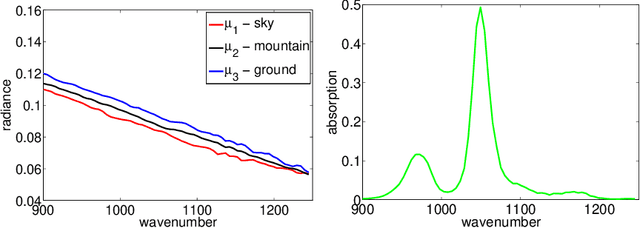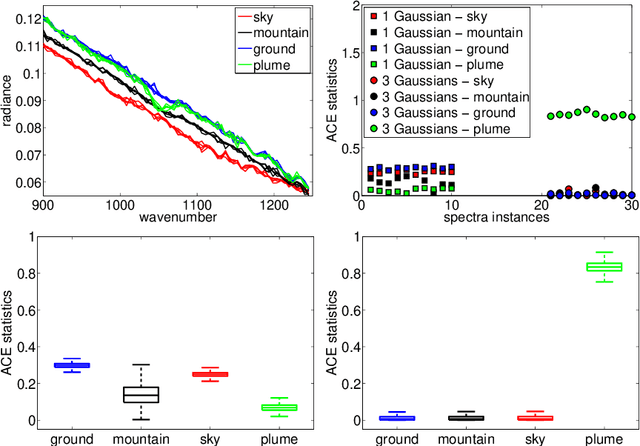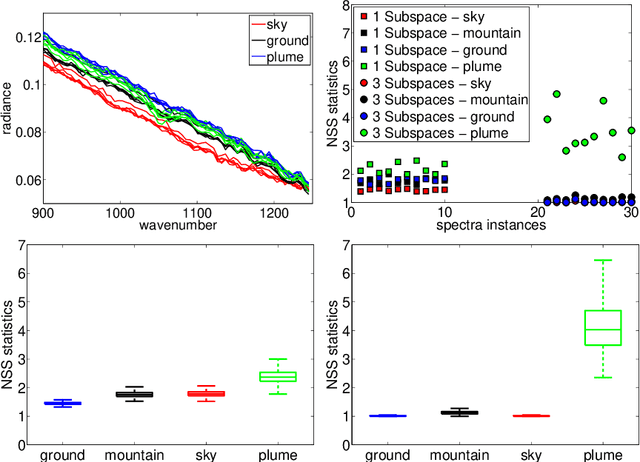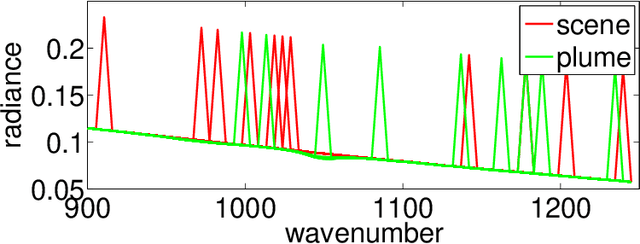High Dimensional Data Modeling Techniques for Detection of Chemical Plumes and Anomalies in Hyperspectral Images and Movies
Paper and Code
Jan 29, 2016



We briefly review recent progress in techniques for modeling and analyzing hyperspectral images and movies, in particular for detecting plumes of both known and unknown chemicals. For detecting chemicals of known spectrum, we extend the technique of using a single subspace for modeling the background to a "mixture of subspaces" model to tackle more complicated background. Furthermore, we use partial least squares regression on a resampled training set to boost performance. For the detection of unknown chemicals we view the problem as an anomaly detection problem, and use novel estimators with low-sampled complexity for intrinsically low-dimensional data in high-dimensions that enable us to model the "normal" spectra and detect anomalies. We apply these algorithms to benchmark data sets made available by the Automated Target Detection program co-funded by NSF, DTRA and NGA, and compare, when applicable, to current state-of-the-art algorithms, with favorable results.
 Add to Chrome
Add to Chrome Add to Firefox
Add to Firefox Add to Edge
Add to Edge